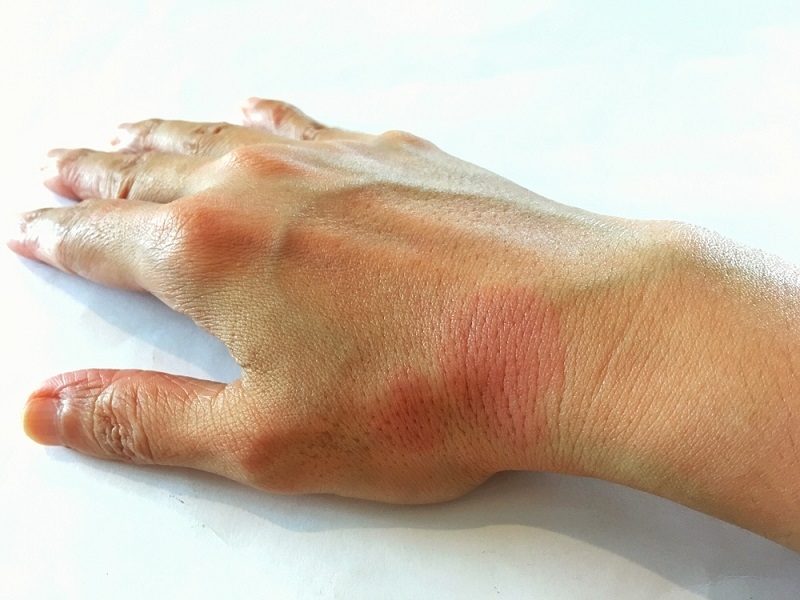Understanding What Is Lupus & Identifying its Early Signs

What if your body’s defense system mechanism turns against itself. This is exactly what happens when someone suffers from lupus.
But there are still people who exactly do not know what is lupus. It is a condition where the immune system of your body that is responsible for protecting you stops fighting against germs, and instead attacks the healthy parts of your body.
This disease can impact you in various ways, it can give you tired feeling, cause swelling in hands and knees, or even cause rashes. In this blog, you will learn everything about Lupus and find out the early symptoms that you must identify to ensure your recovery is quick.
What is Lupus Rash?
A lupus rash is one of the most visible signs of the disease. It usually spreads across your cheeks and nose, forming a butterfly-like shape. However, these rashes also appear on the arms or neck in some people, especially after being under the sunlight for long period.
These rashes are more than just a mark on your body, it is a signal that your body is overreacting and there could be something wrong inside. At times, the lupus rash fades when symptoms calm down, while at other times, it returns stronger during flares.
For many, learning to recognize the rash is the first clue in answering their doubt of what is lupus?
These rashes show how your immune system can send warning signs through the skin.
So, if you are also facing something similar, protecting your skin from direct sunlight should be your one of your top priorities every day.
Systemic Lupus Erythematosus
Lupus is not something that is just limited to your skin, it can even spread across your inner organs. This deeper form is called systemic lupus erythematosus, often shortened to SLE.
Systemic lupus erythematosus can affect your joints, kidneys, heart, or even the brain. Some people have even experienced pain in their joints and swelling in their hands.
Apart from these things, SLE can even cause chest pain, headaches, or constantly keep your tired. It is extremely important for you to understand that the symptoms or issues are not always similar for everyone.
This wide range is why many call it a condition with many faces. For some, systemic lupus erythematosus stays mild for years, while for others, it can bring sudden challenges that require constant care.
However, with the right treatment and support, any form of lupus can be managed.
Early Signs of Lupus in Females

The early signs of lupus in females can look different for each person. Some appear on the skin, while others affect energy levels or joints.
Some of the common early signs of lupus in females are as follows:
Unexplained Fatigue
If you are feeling tired even after enough rest or proper sleep, it could be a sign of lupus.
Joint Pain and Stiffness
This is a very common sign as most female experience swelling in hands and knee pain.
Lupus Rash
A butterfly-shaped mark on your cheeks and nose or skin sensitivity to sunlight.
Frequent Fevers
Lupus can cause mild fevers regularly without any clear cause.
Hair Thinning
Your hair will start becoming thin and hair fall can increase a lot because of lupus.
Unexplained Weight Changes
Females experience sudden weight gain or weight loss because of lupus even without any lifestyle changes.
These early signs of lupus in females may not look serious, but it is essential for you to identify them in order to treat it promptly.
Understanding Lupus Treatments
When people hear the question what is lupus, they quickly wonder how it can be managed. While there is no complete cure, there are many lupus treatments that help control the symptoms.
The goal of treatment is simple: reduce pain, calm the immune system, and prevent damage to the body. Some treatments focus on easing joint pain and swelling. Others work on keeping the immune system from attacking healthy organs.
But it is not only about medicines. Daily choices play a big role too. Getting enough rest, eating balanced meals, and avoiding long hours in the sun can help reduce flares. Stress management is another important part of lupus treatment, because stress often triggers symptoms.
Each person may need a different plan. For some, simple care helps control skin issues like a lupus rash. For others, managing systemic lupus erythematosus requires more detailed steps. Either way, treatments today allow many people to live active lives despite the condition.
Lupus Disease in Everyday Life
Living with lupus disease is not the same every day. Some days feel normal. Other days bring flare-ups that change plans. Fatigue, pain, or a sudden rash can make even simple tasks harder.
Sunlight, stress, or lack of sleep may trigger symptoms. That is why people with lupus disease often adjust their routines—planning rest, protecting their skin, and balancing their energy.
The visible marks of a lupus rash or the hidden pain of tiredness can feel overwhelming at times and impact your mental state. Support from family and friends makes a big difference. Awareness also matters, because understanding helps reduce the weight of carrying a condition that is not always visible.
Even though lupus disease cannot be cured, it can be managed. Many live full and active lives with the right care. The key is knowing the signs, finding what triggers symptoms, and following through with lupus treatments that help maintain balance.
Conclusion
Are you still unsure what is lupus? It is a simple story of your body’s defense system that mistakenly starts attacking itself. Sometimes it shows as a lupus rash on the skin, while at other times it becomes systemic lupus erythematosus, reaching deep into the organs.
The early signs of lupus in females are seen as the warning are tiredness, joint pain, fevers, or skin changes. Spotting them early can help you in reducing its impact. With proper lupus treatments, symptoms can be controlled, and daily life can remain active and steady.
Lupus disease may bring challenges, but it does not erase the chance of living a meaningful life. With awareness, support, and care, people with lupus continue their journey by balancing flare-ups, finding strength, and moving forward one day at a time.
This content was created by AI
